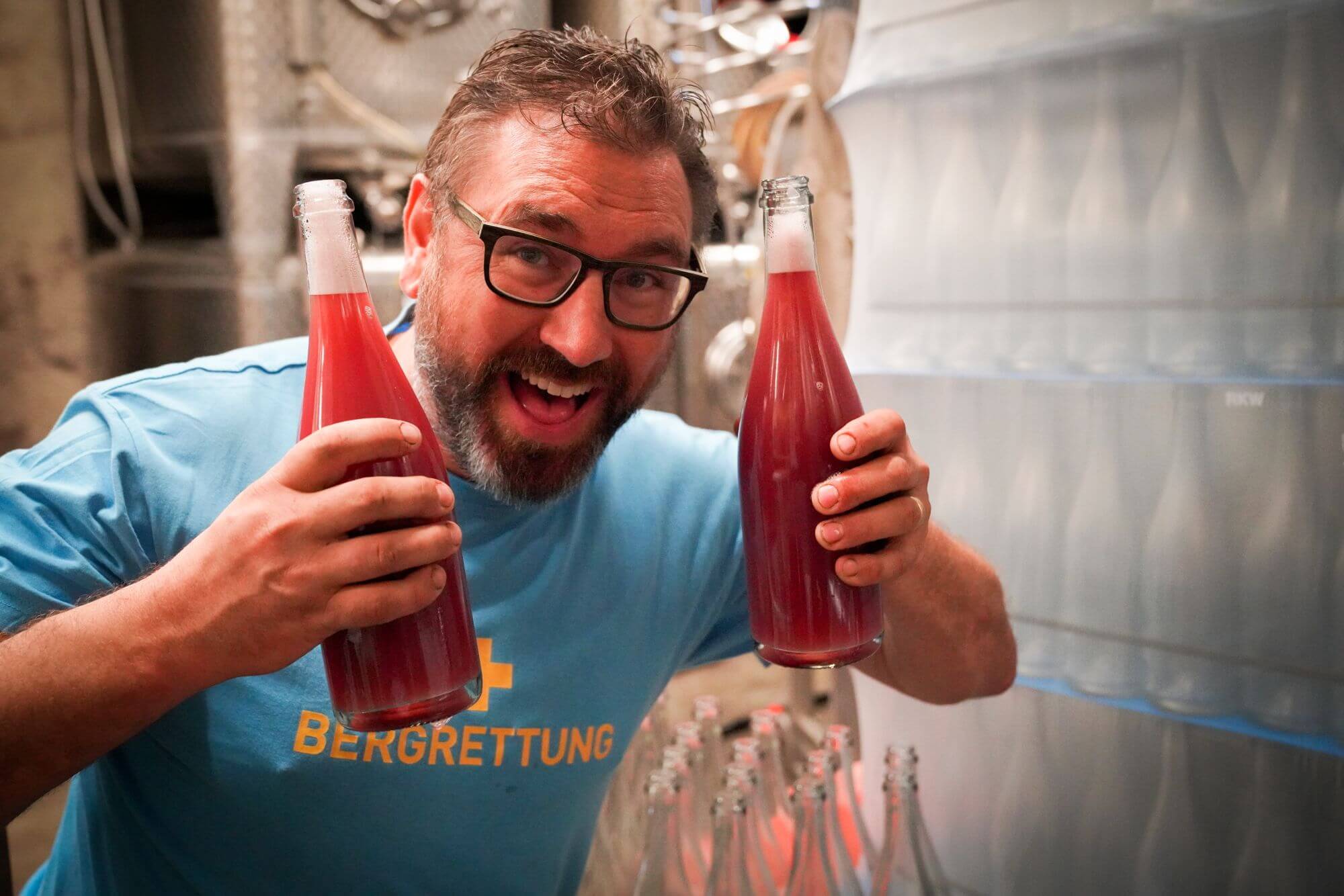A Mischievous Pour: Tasting the 2017 Little Bastard from Staffelter Hof

Table of Contents
- Introduction
- The Name That Starts the Conversation
- Staffelter Hof: A Heritage Reimagined
- Natural Wine with a Rogue Personality
- First Look: Colour, Clarity, and Curiosity
- Aromatics That Break the Mould
- On the Palate: Wild Fruit, Texture, and Tension
- Forest Wines and the Joy of the Unexpected
- When to Open It and What to Pair It With
- More Than a Bottle, It’s a Statement
Introduction
Some wines whisper. Others shout. And then there are those rare bottles that smirk knowingly as they pour into your glass — a little irreverent, unapologetically bold, and brimming with personality. The 2017 Little Bastard by Staffelter Hof is exactly that kind of wine.
It doesn’t conform, doesn’t pander, and certainly doesn’t try to be like everything else on your shelf. It’s the kind of bottle that invites curiosity, rewards the open-minded, and lingers in memory well after the final sip.
The Name That Starts the Conversation
Let’s get one thing out of the way: yes, it’s really called Little Bastard. The name alone is enough to raise eyebrows or spark a grin across the table — and that’s precisely the point.
This is a wine that doesn’t take itself too seriously, yet behind the cheeky label lies a serious dedication to natural winemaking and craft. It’s playful in spirit, but grounded in authenticity. Staffelter Hof, one of the oldest wineries in the world, isn’t trying to make a scene — it’s simply letting the wine speak for itself, and sometimes that voice comes with a bit of sass.
For those browsing with an eye for character, Forest Wines offers the 2017 Little Bastard as part of their lovingly curated selection. Known for spotlighting honest, low-intervention bottles, they bring the unexpected right to your doorstep.
Staffelter Hof: A Heritage Reimagined
Established over 1,000 years ago in the Mosel region of Germany, Staffelter Hof isn’t new to winemaking — but its current approach feels refreshingly modern. Under the guidance of winemaker Jan Matthias Klein, the estate has embraced a minimal intervention ethos, crafting wines that honour the land while shrugging off formality.
Little Bastard is a clear example of this philosophy. It’s a blend, it’s a bit hazy, it’s dry but juicy — and above all, it’s alive. No heavy manipulation, no chemical shortcuts — just naturally farmed grapes, native yeast, and a belief in letting the wine find its own way.
Natural Wine with a Rogue Personality
Little Bastard doesn’t fit neatly into any one category. It blurs lines — between white, orange, and something entirely its own. It’s technically a white blend with skin contact, which lends it a slightly amber hue and an edge of grip you wouldn’t expect from your average Riesling-led wine.
The grapes? A cheeky mix of Riesling, Müller-Thurgau, Muscat and Sauvignon Blanc. It’s an unconventional combination, made even more fascinating by the decision to allow partial maceration on the skins. The result? A wine that’s fragrant, textured, and completely unpredictable in the best way.
First Look: Colour, Clarity, and Curiosity
Pour a glass and the visual intrigue begins. The colour sits somewhere between golden straw and cloudy orange, with a slightly hazy appearance that signals its unfiltered nature.
No, it’s not broken. And yes, it’s meant to look like that. This is wine left as close to its natural state as possible — no fining agents, no clarifying chemicals, no forced polish. What you see is what the vineyard gave.
Aromatics That Break the Mould
The nose is where Little Bastard starts showing off. It opens with a burst of orchard fruit — think bruised apple, pear skin, and a lick of citrus — before leaning into more unexpected territory. There’s elderflower and musky florals from the Muscat, a slight herbal lift, and even a whisper of funky, cider-like notes that hint at wild fermentation.
Give it a swirl and you’ll notice that it evolves quickly. It doesn’t stay still. One minute it’s fruity and floral, the next it’s earthy and spicy. It’s not a wine that waits to be understood — it invites you to keep up.
On the Palate: Wild Fruit, Texture, and Tension
Take a sip and the unpredictability continues. The texture is soft but structured, with a light tannic grip thanks to that skin contact. It dances between juicy acidity and subtle bitterness, which keeps the palate alive and calling for another glass.
Flavours of apple, white peach and citrus pith mingle with herbal notes, a touch of ginger, and a slightly yeasty undertone that adds savoury depth. There’s tension between the components, but it works — like a jam session where each instrument has its own moment before settling into harmony.
The finish? Dry, refreshing, and just a little wild. It leaves you thinking more about how it made you feel than trying to define it in tasting note terms.
Forest Wines and the Joy of the Unexpected
There’s a reason Forest Wines stocks Little Bastard. They know their audience — curious, quality-conscious drinkers who want more than just another safe bottle. Their range champions low-intervention, organically produced wines that reflect place, story, and spirit.
Little Bastard isn’t just a product. It’s an experience. And Forest Wines makes it easy to access bottles like this, whether you’re experimenting with skin-contact wines for the first time or already deep into the natural wine world.
When to Open It and What to Pair It With
This is not your quiet, background wine. Little Bastard wants a role at the centre of the table — preferably one that includes bold flavours and interesting textures.
Perfect pairings include:
- Spiced dishes – Think Moroccan tagines or Middle Eastern mezze
- Grilled vegetables – Aubergine, courgette, red peppers
- Funky cheeses – Goat’s cheese, washed-rind varieties
- Fermented fare – Miso-glazed dishes or pickled accompaniments
It also works brilliantly with nothing more than good conversation and some crusty bread.
Serve it slightly chilled — not fridge cold — and give it time in the glass. Like most natural wines, it evolves as it opens, revealing more of its complexity over the course of the evening.
More Than a Bottle, It’s a Statement
The 2017 Little Bastard from Staffelter Hof isn’t a wine you forget. It might not be the neatest pour on the shelf, but it doesn’t need to be. Its value lies in its confidence — a confidence that says wine can be fun, challenging, and free-spirited all at once.
In a market full of polished labels and formulaic profiles, Little Bastard is the reminder that sometimes the best wines are those that refuse to behave. They surprise you. They make you laugh. And most importantly, they make you feel something.
Here’s to the troublemakers. The ones who ferment outside the lines.


